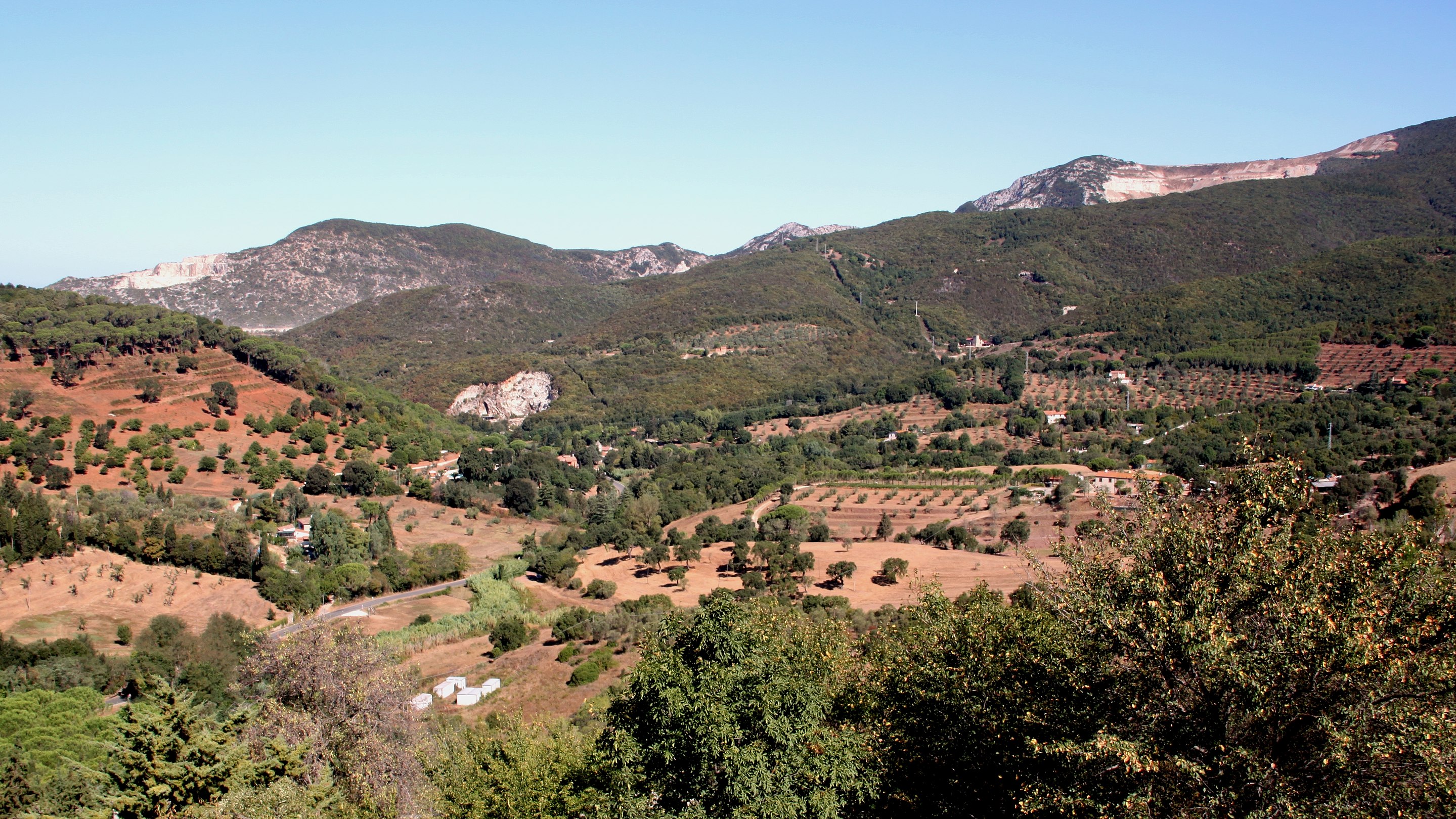The Metalliferous Hills constitute the main and most extensive system of the plain and marine area of the Tuscan Anti-Apennines. They extend in the central-western part of Tuscany, involving four provinces, the south-eastern part of the province of Livorno, the southern part of the province of Pisa, the southwestern part of the province of Siena and the north-western part of the province of Grosseto (Colline Metallifere in Grosseto).
The territory, with the exception of the peaks of the Cornate di Gerfalco, Poggio di Montieri and Carline di Travale, which exceed 1000 meters above sea level, is mainly hilly . From the Metalliferous Hills are born various streams: among the most important the Cecina, the Cornia, the Merse . The territory is characterized by the presence in the subsoil of mineral resources of various types. Between the provinces of Pisa, Siena and Grosseto there are also sources of geothermal energy which manifest themselves in the form of boraciferous shower heads and are used for the production of electricity in geothermal power plants in the area of Larderello.
The area involves the municipalities of Sassetta, San Vincenzo, Campiglia Marittima and Suvereto in the province of Livorno; Monteverdi Marittimo, Pomarance and Castelnuovo di Val di Cecina in the province of Pisa; Chiusdino, Monticiano Radicondoli and, in part, Casole d’Elsa and Sovicille in the province of Siena; Monterotondo Marittimo, Montieri, Roccastrada, Massa Marittima, Gavorrano, Scarlino, Follonica and the northern part of the municipality of Castiglione della Pescaia in the province of Grosseto.
Already at the time of the Etruscans, the Metalliferous Hills were known and exploited for deposits of hematite, pyrite, chalcopyrite , alum, stibnite, calamine, blende, galena and cassiterite for the extraction of the mountain in Monte Valerio di Campiglia Marittima (exploited intensely in the Second World War); the mining activity continued incessantly and reached its peak between the second half of the 19th century and the second post-war period, when the lignite deposits were exploited (Ribolla and Casteani mines), then rapidly declining. A varied network of cableways with railway and port connections was developed to serve these mines, most of which have now been suppressed. Of the mining activity remain wells, tunnels, ironworks, miners’ villages and ruins of castles born in the Middle Ages to defend the precious veins, above all of copper and silver, used to mint money.



